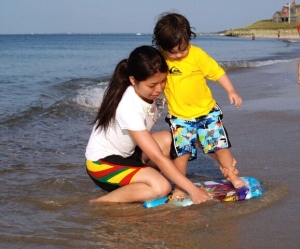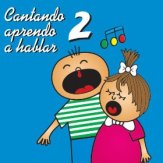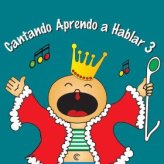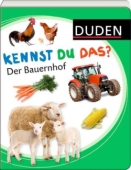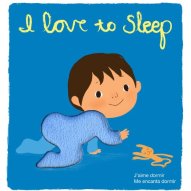Part I of this series is intended for Parents-to-Be and parents of young babies through 18 months. The subsequent parts of this series will address toddlers, pre-schoolers, pre-readers, elementary school-aged, middle school-aged and beyond.
Here goes:
MUSIC
Tip: I started playing music in Spanish (target language #1) as soon as my boys came home from the hospital. I played it at certain times of the day (feeding, diaper-changing, playtime, etc.). Sometimes, I sang along and made the experience playful, more enjoyable and memorable. When my boys started speaking, I noticed they incorporated words from the various songs into their own vocabulary and correctly used them in context. Carefully select your music in French, Italian, German, Romanian, Greek – you name it – and start playing music and singing to your baby in the target language of your choice!
Tool # 1: Cantemos Todos Juntos
 For a top of the line, quality, musical and language experience in Spanish, get your hands on Cantemos Todos Juntos. This CD not only brings a smile to children’s faces, but also makes them want to sing and dance! I supplemented this CD with the use of egg shakers, tambourines triangles and castanets and made listening to it as festive and fun-filled as possible! My boys listened to the traditional songs on this CD well into their 4’s and 5’s and to this day, they recall some of the lyrics and sing to themselves when trying to jog their memory with respect to a word that is on the tip of their tongue. The music is beautifully executed and of varying tempos and rhythms which keeps children engaged throughout the CD and exposes them to the patterns of music.
For a top of the line, quality, musical and language experience in Spanish, get your hands on Cantemos Todos Juntos. This CD not only brings a smile to children’s faces, but also makes them want to sing and dance! I supplemented this CD with the use of egg shakers, tambourines triangles and castanets and made listening to it as festive and fun-filled as possible! My boys listened to the traditional songs on this CD well into their 4’s and 5’s and to this day, they recall some of the lyrics and sing to themselves when trying to jog their memory with respect to a word that is on the tip of their tongue. The music is beautifully executed and of varying tempos and rhythms which keeps children engaged throughout the CD and exposes them to the patterns of music.
Tool # 2: Canciones de los Animalitos
 My children and I loved the gentle songs about an array of animals on this MP3 Album titled: Canciones de los Animalitos. Although the songs are calming and soothing, they are also catchy. As my little listeners got older, they paid closer attention to the elaborate descriptions of the animals and eventually began asking questions to further their knowledge about them. This MP3 Album is an excellent tool for building vocabulary as it provides more details about animals that you could ever imagine in a song. (These animal songs are far from being a variation of of “Old MacDonald Had a Farm”). There are two tracks about caring for the environment, which is an added bonus. You can sample the songs by clicking on the link provided above.
My children and I loved the gentle songs about an array of animals on this MP3 Album titled: Canciones de los Animalitos. Although the songs are calming and soothing, they are also catchy. As my little listeners got older, they paid closer attention to the elaborate descriptions of the animals and eventually began asking questions to further their knowledge about them. This MP3 Album is an excellent tool for building vocabulary as it provides more details about animals that you could ever imagine in a song. (These animal songs are far from being a variation of of “Old MacDonald Had a Farm”). There are two tracks about caring for the environment, which is an added bonus. You can sample the songs by clicking on the link provided above.
Tools # 3, 4, and 5: Cantando Aprendo a Hablar Vol. I Vol. II and Vol. III
This MP3 Collection was developed by speech pathologists (called speech therapists in the USA).The songs are nurturing, fun, and playful. This collection is definitely one ideal for playtime or when you want to be silly. I recommend incorporating toys and your own interactive fun to get the most out of them. I found that they were extremely useful for introducing words, but more so for developing phonological awareness (the ability to hear sounds that make up words in spoken language). Phonological awareness is the first step towards developing reading and writing abilities. For more on bilingualism and biliteracy, please see my previous post Formula for Raising Bilingual and Biliterate Children. Some of the sounds the songs review are the rolling r’s, the vowel sounds, rhyming words and so much more. We have all 3 volumes, and because there are so many tracks, I chose the tracks that were the most appropriate for the developmental stage in which my children found themselves. I gradually introduced the remaining tracks as the boys made progress in their language skills. You can sample the songs by clicking on the links provided below.

Volume I
BOOKS
Tip: In my experience, certain types of books were more conducive to learning the target language than others during different developmental stages. In addition to short story books that can be read to babies in order to accustom them to the rhythm, intonation and sounds of the target language, I highly recommend the following categories of books in the target language of your choice:
Tool # 6: Word Books
 Colorful word books that feature photographs in lieu of illustrations for the youngest babies. My boys tended to focus on the photographs of the babies and the baby-related objects in the DK Word Books and they really made the connection when I said the word while pointing to the photo. I could almost see their wheels spinning as they took it all in. Since babies are generally intrigued by seeing other babies in person and in photographs, this type of book is so helpful and useful in introducing a target language to babies. My little readers enjoyed DK Word Books mainly because of the vivid, colorful photos they could identify with.
Colorful word books that feature photographs in lieu of illustrations for the youngest babies. My boys tended to focus on the photographs of the babies and the baby-related objects in the DK Word Books and they really made the connection when I said the word while pointing to the photo. I could almost see their wheels spinning as they took it all in. Since babies are generally intrigued by seeing other babies in person and in photographs, this type of book is so helpful and useful in introducing a target language to babies. My little readers enjoyed DK Word Books mainly because of the vivid, colorful photos they could identify with.
Tool # 7: Board Books
By the time my older son was 16 months old, our German au pair had joined us and brought with her a collection of wonderful German Board Books. And so we started introducing him to German (target language #2). My favorite object identification books in German for this age group are “Kennst Du Das?” books (available on Amazon.de) They are colorful, captivating, thematically organized and so well made. We loved this series so much, we continued collecting DUDEN books as the boys got older and went pre-school. More on the advanced DUDEN books in upcoming posts!
Tool # 8: Lift-the-Flap Books
I found that this category of books piqued my boys’ attention the most because of the interactive component. As they were immersed in the sounds and rhythm of words and sentences, they also reveled in the interactive possibilities – thanks to the simple flaps. These books were page-turners for them! Karen Katz Lift-the-Flap books were some of our favorites.
Tool # 9 – Tactile Books
Touch and Feel books are suitable for making the connections between words and the sense of touch. Babies are further stimulated when you add their senses to the language learning process and tend to remember these usually abstract words more easily. It became a natural and memorable way to learn descriptive words in the target language.
Tool #10: Language Program designed for Babies and Toddlers
Enroll your baby in a quality Language Program that will enrich your baby and support your goal as a parent. See my post How to Choose A Language Program for Your Little One for additional Tips. Babies and toddlers get so much pleasure from socializing with other children,and it is so special for parents to see how their little ones flourish in a second language. It is natural for babies to want to communicate with, observe, listen to and play with other children. Bringing your child to an environment outside of the home to do just that, in the target language, is so beneficial and stimulating!!
I hope that these songs and books make you and your little one as happy and as excited about languages as they made us. All of my recommendations are based on my personal experience using the products with my children since 2006.
Frances Mingoia is a participant in the Amazon Services LLC Associates Program, an affiliate advertising program designed to provide a means for sites to earn advertising fees by advertising and linking to amazon.com.

